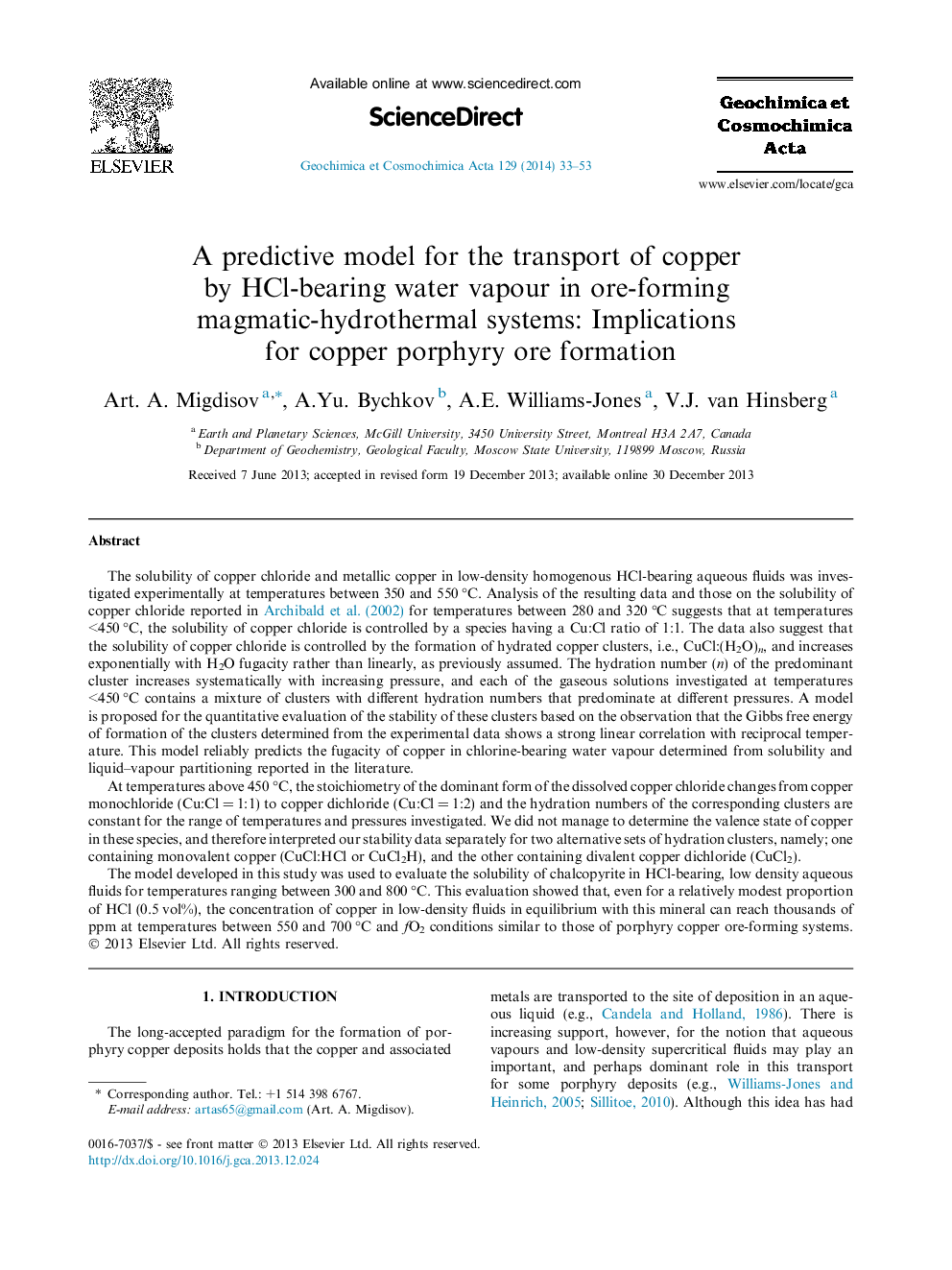| کد مقاله | کد نشریه | سال انتشار | مقاله انگلیسی | نسخه تمام متن |
|---|---|---|---|---|
| 4702120 | 1638028 | 2014 | 21 صفحه PDF | دانلود رایگان |

The solubility of copper chloride and metallic copper in low-density homogenous HCl-bearing aqueous fluids was investigated experimentally at temperatures between 350 and 550 °C. Analysis of the resulting data and those on the solubility of copper chloride reported in Archibald et al. (2002) for temperatures between 280 and 320 °C suggests that at temperatures <450 °C, the solubility of copper chloride is controlled by a species having a Cu:Cl ratio of 1:1. The data also suggest that the solubility of copper chloride is controlled by the formation of hydrated copper clusters, i.e., CuCl:(H2O)n, and increases exponentially with H2O fugacity rather than linearly, as previously assumed. The hydration number (n) of the predominant cluster increases systematically with increasing pressure, and each of the gaseous solutions investigated at temperatures <450 °C contains a mixture of clusters with different hydration numbers that predominate at different pressures. A model is proposed for the quantitative evaluation of the stability of these clusters based on the observation that the Gibbs free energy of formation of the clusters determined from the experimental data shows a strong linear correlation with reciprocal temperature. This model reliably predicts the fugacity of copper in chlorine-bearing water vapour determined from solubility and liquid–vapour partitioning reported in the literature.At temperatures above 450 °C, the stoichiometry of the dominant form of the dissolved copper chloride changes from copper monochloride (Cu:Cl = 1:1) to copper dichloride (Cu:Cl = 1:2) and the hydration numbers of the corresponding clusters are constant for the range of temperatures and pressures investigated. We did not manage to determine the valence state of copper in these species, and therefore interpreted our stability data separately for two alternative sets of hydration clusters, namely; one containing monovalent copper (CuCl:HCl or CuCl2H), and the other containing divalent copper dichloride (CuCl2).The model developed in this study was used to evaluate the solubility of chalcopyrite in HCl-bearing, low density aqueous fluids for temperatures ranging between 300 and 800 °C. This evaluation showed that, even for a relatively modest proportion of HCl (0.5 vol%), the concentration of copper in low-density fluids in equilibrium with this mineral can reach thousands of ppm at temperatures between 550 and 700 °C and fO2 conditions similar to those of porphyry copper ore-forming systems.
Journal: Geochimica et Cosmochimica Acta - Volume 129, 15 March 2014, Pages 33–53